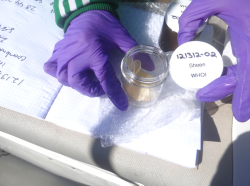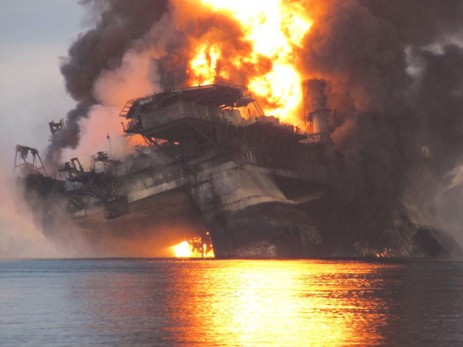
David Valentine, UC Santa BarbaraAnalysis of oil-sheen samples revealed that the Deepwater Horizon rig was the source.
More than three years after the Deepwater Horizon exploded, triggering the worst oil spill in American history, the sunken wreckage of the rig may still be leaking oil into the Gulf of Mexico.
Beginning in the fall of last year and continuing through the winter, mysterious oil sheens were spotted in the vicinity of the rig wreckage.
A team of researchers set about trying to figure out exactly where the oil was coming from by studying its chemical composition. They matched the slicks to samples taken from Deepwater Horizon debris. They also tracked the trajectories of the oil sheens as they spread across the Gulf, tracing them back to the wreckage.
Now they have concluded that pockets of oil trapped in the wreckage bubbled to the surface, triggering the oil sheens that were spotted in recent months.
The fact that the sunken rig has been leaking is bad news, but the scientists ruled out BP’s capped Macondo well as the source of the leaks, which is good news. “[T]he likely source is oil in tanks and pits on the [Deepwater Horizon] wreckage, representing a finite oil volume for leakage,” they reported in a new paper published in the journal Environmental Science & Technology. From a press release by Woods Hole Oceanographic Institution:
The oil sheens were first reported to the United States Coast Guard by BP in mid-September 2012, raising public concern that the Macondo well, which was capped in July 2010, might be leaking.
“It was important to determine where the oil was coming from because of the environmental and legal concerns around these sheens. First, the public needed to be certain the leak was not coming from the Macondo well, but beyond that we needed to know the source of these sheens and how much oil is supplying them so we could define the magnitude of the problem,” said WHOI chemist Chris Reddy.
Is the rig’s ghoulish carcass still leaking oil to this day? That’s hard to say. “There are a few small lines [of oil] in the vicinity,” said Bonny Schumaker of On Wings of Care, a nonprofit that monitors Gulf oil spills from light aircraft. “They look just like other natural seeps in the Gulf.”


